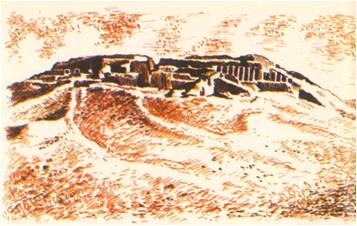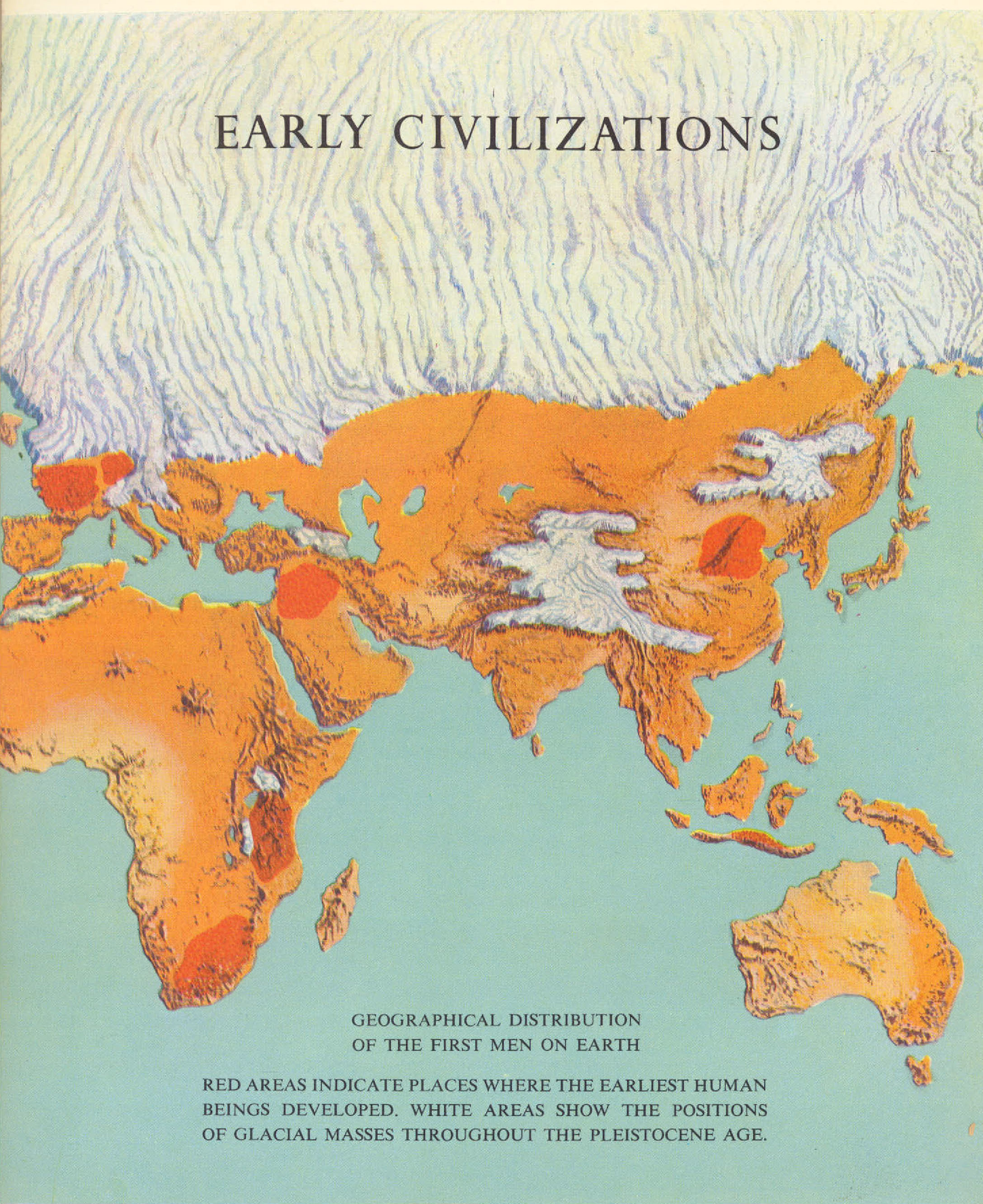For thousands of years during the Stone Age, only scattered groups of people had lived in India. With only the simplest tools of bone, wood and stone, they hunted and gathered food. Cut off from other peoples by the mountain and the sea, the first Indians made few advances in their primitive way of life. Then, sometime between 3500 B. C., new settlers began to appear along the Indus River Valley in northwestern India, a region that would be called West Pakistan thousands of years later. It seems almost certain that these newcomers were from the mountains and plateaus to the northwest, the modern lands of Iran and Afghanistan. When they arrived, the new commers were already able to make pottery, to farm and to raise animals. Most likely too, some of them knew of the cities far to the west, on the plains of Mesopotamia. From those more advanced cities, the Indus valley people learned about new objects, such as copper and bronze tools. They also heard tales about how those distant peoples controlled the river’s water, or how they scratched signs in clay tablets to record words. However much they may have borrowed, the Indus Valley people worked out their own ways. By 2500 B. C., a distinctive civilization had begun to develop along the Indus River. The river itself played an important part in this civilization. Sometimes it flooded so badly that it wiped out villages and fieldworks, or even changed its course entirely. Usually however, it overflowed just enough to leave a rich soil for each season’s crops and the people worked together to take advantage of it. The river also made it easy for the various settlements to exchange goods and ideas. The People of the Indus Of the dozens of villages, two soon grew …
Read More »The Coming of Man
About 400,000 years ago, a group of people were gathered at the mouth of a cave. They had a fire in which they were roasting deer meat and around them lay the bones of monkeys, wild pigs and water buffalo from previous meals. One of the women was picking berries from the nearby bushes. A man sitting close to the fire chipped away at a broken stone he would use to cut off chunks of the cooked meat. Another man, too hungry to wait, gnawed the marrow from some bones. The cave was one of several not far from what is now Peking, China and the people who first used these caves are known as Peking Man. Peking Man did not leave anything behind except some bones, charcoal, berries and stones, but these are enough to suggest certain things about the way he lived. They show that the people at the caves ate meat as well as plants, made crude tools, could kill large animals and knew how to keep a fire alive. With fire they could keep warm and fend off wild animals at night. Probably they cooked some foods in the fire. Instead of eating in the fields after killing an animal, the men might wait until they gathered around the fire to eat. Such a meal became something of a family or group occasion. There was a sharing of tasks, of food, of pleasures. No one said much, but with simple language the adults could pass on something of what they had learned to their children. At times, when food was scarce these people may have eaten human flesh, but it is likely they killed only to survive. Or perhaps they believed by eating human flesh they could obtain the strength of a slain enemy, or keep …
Read More »

